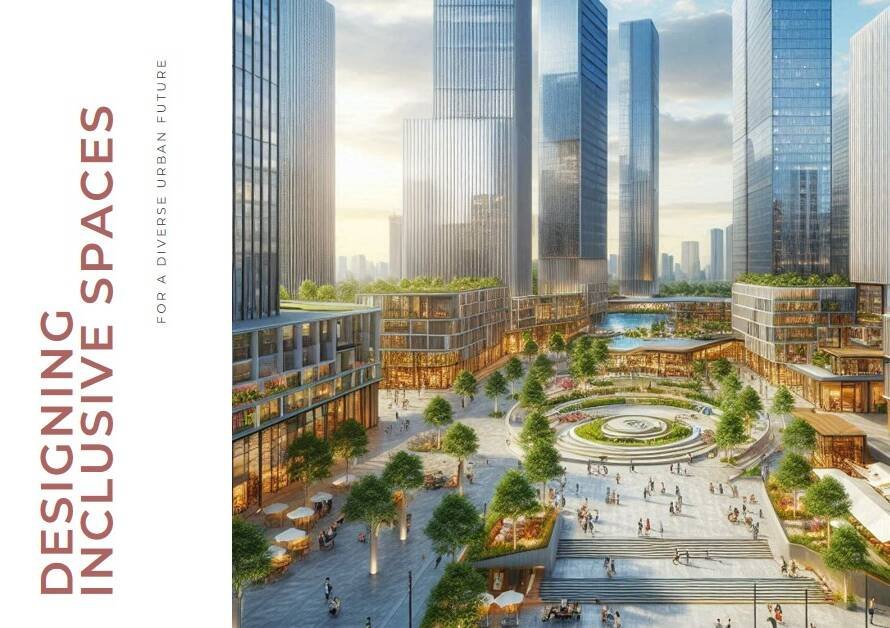
Table of Contents
Understanding Community Design in Architecture
So Community Design in Architecture, what truly breathes life into architecture is not the aesthetic appeal of towering edifices alone; it’s about creating spaces that reflect, celebrate and foster community identities. This phenomenon better known as community design in architecture underscores a paradigm shift from inward-looking structures to outward-interactive spaces. It exemplifies empathy-driven choices, where an architect’s approach isn’t just about constructing buildings but about crafting experiences that stimulate interaction and promote inclusivity.
Understanding community design goes beyond perceiving a blueprint; it demands an intimate comprehension of every individual space’s cultural context, intricate sociology woven amongst inhabitants, and even embraces environmental inputs for sustainable developments. When architects adopt this lens while conceptualizing their designs, they synergize functionality and beauty with a larger purpose – to create architectural canvases that unite communities, encourage social engagement and resonate deeply with those who breathe life into these structures – humans. In the arena of modern conceptions thought through technology’s prism – think virtually augmented recreation hubs or eco-friendly co-working spaces – this understanding becomes pivotal to bridge the gap between brick-and-mortar impressions and an emotionally resonant experience.
Defining Community Design: Core Concepts
Community design is an inclusive process that harnesses the collective wisdom, creativity and aspirations within a community to create spaces that reflect shared principles and values. It goes beyond mere aesthetics and functionality, crossing into the realm of emotional connection where people feel attached to their space because they have played a role in shaping its transformation.
A key concept in community design is ‘placemaking’ which breathes life into public spaces through collaborative efforts of designing appealing, vibrant areas. Through participatory decision-making processes, every member has the opportunity to influence designs with their perspectives. Inherent within this concept is the dependence on mutual respect amongst community members as it drives everyone toward consensus regarding how to blend individual desires into a composite whole. Additionally, successful community design encourages sustainable practices by creating structures that are environmentally friendly and can potentially decrease energy consumption, thereby reinforcing one’s commitment towards environmental conservation amidst modern urban living.
The Importance of Community Design
Community design goes beyond the basic construction of buildings. It is a potent tool for social change, playing a vital role in bringing together diverse groups of people and fostering connections and relationships amongst them. The logic behind this is pretty straightforward: When residents feel connected to their environment, they are more likely to promote and maintain community health, safety, beauty, and civic engagement.
Accommodating neighbourhood parks or installing benches at strategic intervals encourages social interaction which builds relationships among neighbours while enhancing physical well-being through active living. Moreover, pedestrian-friendly communities reduce dependence on cars that reduces pollution levels; sustainable techniques used ensure even Mother Nature smiles upon these society layouts! Thus embracing sensitive community design can evolve into much larger societal gains; it manifests not just in shimmering glass towers but also as smiling faces in vibrant communities.
Principles and Elements of Community Design
Understanding the principles and elements of community design is crucial in shaping our living spaces. The idea centers on creating functional, sustainable, and aesthetically pleasing environments that mirror the unique culture, history, and needs of its inhabitants. While the specifics can vary greatly from one project to another, some universal principles guide this process.
One essential principle is diversity in design which ensures various needs of residents are catered for – accessibility to public amenities being a key component. Sustainability is another cardinal principle when considering community design; it involves balancing current requirements while factoring in future generations’ needs. Elements such as walkability encourage active lifestyles and foster interaction among community members whilst preservation of local features promotes cultural expression all while enhancing visual appeal of the region. Thus, by understanding these principles and elements architects create more livable communities that inspire connection rather than isolation.
Role of Architects in Community Design
Architects play a significant, multifaceted role in community design that often transcends the boundaries of simply designing physical spaces. They act as mediators, master planners and trendsetters in shaping communities that are functional, sustainable and aesthetically alluring. Their knowledge and adeptness at blending form with function enables architects to convert abstract concepts into tangible edifices and spaces reflecting collective community values.
Their contribution in community design is particularly noteworthy when it comes to adapting to environmental sustainability norms. The way our neighborhoods are built can either enhance or degrade a local environment’s ecosystem services. Architects command an extraordinary power here, optimizing designs for energy efficiency, leading the promotion of renewable resources implementation, instilling water conserving practices through landscape architecture – creating relevancy for our future habitats. So the next time you marvel at your city’s skyline or enjoy a tranquil moment in a thoughtfully designed public space remember – behind this stage there is an invisible conductor known as an architect orchestrating every single detail.
Notable Examples of Successful Community Design
Successful community design goes beyond simply fashioning beautiful structures. It’s about creating environments that echo the diversity and dynamism of those who inhabit them, fostering relationships and growth. Among the incredible examples of this architectural discipline is Serenbe, a model community located in Georgia, U.S. Here, architects focused heavily on sustainability and connectivity designing homes with proximity to walking trails and organic farms. This masterful interweaving of nature within living spaces has resulted in a flourishing community experiencing first-hand the benefits of thoughtful community design.
Another noteworthy example stretches across the ocean to Copenhagen, Denmark, where sustainable housing project 8 Tallet by Bjarke Ingels Group (BIG) stands as an epitome of innovative community design. The building’s shape delivers both mountain and sea landscapes for all apartments while its looping path promotes neighborly interaction for enhanced social cohesion—a vivid demonstration that community-focused designs can help foster healthy relationships among residents while ensuring their needs are met elegantly and efficiently.
Challenges and Solutions in Implementing Community Design
Launching a successful community design process extends beyond mere architectural planning. It morphs into a complex puzzle of integrating distinct elements – cultural sensitivities, inherent geographical constraints, and intertwining social relationships. For instance, cultural diversity brings a challenge due to varying aesthetic preferences; uneven terrain impedes construction projects; or socially conservative locales may limit public engagement.
Solutions inherently lie in adopting an inclusive, multi-disciplinary approach. The application of participatory design methods ensures diverse voices are heard and represented in the final blueprint – fostering an affinity with the crafted spaces whilst respecting cultural nuances. Similarly, leveraging cutting-edge technologies such as BIM (Building Information Modelling) can convert geographical challenges into unique features of the community’s layout. Lastly, facilitating open dialogues catalyzes innovative collective ideas while respecting societal norms hence cultivating higher social acceptance for the project.
Conclusion: Future of Community Design in Architecture
The future of community design in architecture is a promising one, with the potential to impact and reshape our urban landscapes more inclusively and sustainably. The continuous integration of participatory design methods will not only democratize the process but also result in spaces that are representative of their communities’ unique identities. This approach fosters a sense of belonging among residents, ultimately contributing to an enhanced quality of life.
Moreover, the utilization of technology such as BIM will continue to address geographical constraints innovatively, transforming them into opportunities for multicultural exchange and collaboration.
As architects increasingly embrace the principle of ‘designing with, not for’, we can expect more public spaces that truly reflect and accommodate the needs, desires, and aspirations of local communities. This shift towards a more empathetic design process can also lead to healthier, safer neighborhoods by prioritizing pedestrian-friendly layouts, green spaces, accessible amenities and facilities – all geared towards promoting social interaction and physical well-being.




2 Comments
Law anna herndon
I am really impressed with your writing skills as well as with the layout oon your blog.
Is this a paid theme or did you moddify it yourself?
Anyway keep up the exccellent quality writing, it’s rare
to ssee a nice bloog like this onne these days.
Mesa Tree Removal
This article sheds light on the importance of empathy-driven architecture that fosters community. When considering community design, do you think architects should also take into account the preservation of mature trees and green spaces within a development? Integrating these natural elements can enhance the aesthetics and emotional connection residents have to their surroundings for landscaping